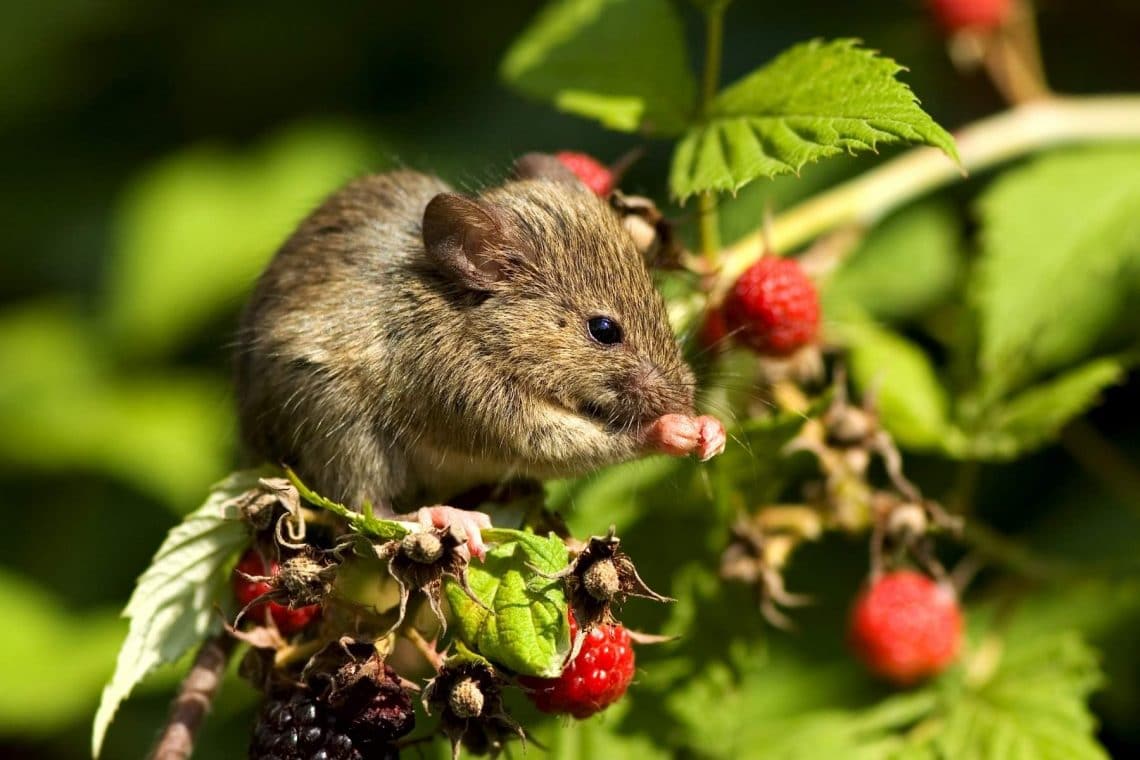Mice do not find favor and interest in everyone. Whether mice want to be caught by bait or fed out of love for animals, it is always worth knowing what food they eat.
To the point
- domestic mouse conditionally vegetarian
- wild mouse eats almost everything
- have “favorite foods
- can survive for days without plant/animal food sources
Contents
Vegetarian and omnivore
Numerously, the house mouse is called a vegetarian, but this is only true if it finds enough plant food. Otherwise it eats what is available. In an “emergency” this also includes insects. Thus it differs only slightly from wild mice, which as omnivores also have meat on the menu.
Food
The following is a list of the foods that mice consume for their diet. Since they have a very sensitive sense of smell, they can pick up food odors even from a long distance. These are followed by the mice, which then attracts them to homes.
- Carrion (rare)
- Apples (for feeding without seeds)
- Avocado (too much is poisonous)
- Bananas
- Tree bark (only in “emergency”)
- Berries
- Pears

- Leaves
- Bread and breadcrumbs
- Acorns
- Strawberries
- Peanut butter (one of the favorite foods and ideal to use as bait)
- Fennel (cabbage and tubers)
- Meat (cooked)
- Cereals (staple food)
- Grass (staple food)
- Cucumbers/snake gherkins
- Oats
- Insects like crickets Snails, larvae and worms
- Cheese (strong smelling it attracts, but rarely eaten).
- Carrots
- Potatoes (too much raw harmful to health)
- cherries
- Kiwis
- clover (especially field mice)
- Foxtail millet
- Kohlrabi
- Herbs (especially basil, dill and chamomile nutritious)
- Pumpkins
- Liverwurst
- Corn
- Mirabelles
- Nuts (staple food)
Tip: That cheese is the most ideal bait for catching mice is a myth. Cheese is not preferred to be eaten by them. Rather, use peanut butter, bacon or chocolate spread, because no mouse can resist these treats and will take many a risk to do so.
- Rape (especially field mice)
- Rice flakes
- Raisins
- Salami
- Lettuce (endive especially liked)
- Seeds (staple food)
- Ham
- Bacon, roasted (one of the favorite foods and ideal as bait)
- Sweets of any kind (especially chocolate, which is why it is ideal as bait)
- Pet food, both dry and wet food
- Watermelons
- Grapes
- Roots
Note: Mice gather food and store it in their nests for the upcoming winter season. They do not hibernate, but if they do not have enough to eat, they go into hibernation to reduce energy consumption.
Other foods
In addition to food and animal feed, a mouse can also feed by means of cellulosic materials such as cardboard and wood. It does this when nothing else is available at the moment, but the body is craving food. This allows it to keep itself alive for a few days without additional food or plant parts, and to escape starvation.
Note: Often gnawed plastic objects are also discovered – especially bags. This is usually not due to hunger. Either they are trying to gain access to the contents by gnawing or they are collecting the fibers for a nest building. They “nibble” on cables, metals and concrete solely to shorten their teeth.
Frequently asked questions
What do baby mice eat?
Mice are among the mammals. Baby mice are fed on their mother’s milk until their teeth are formed. This is the case from about three weeks of age. Then they are usually able to bite, slowly leave the nest and go in search of food on their own. Orphaned babies are fed in rescue centers with special rearing milk for kittens. You can buy this in any well-stocked garden and pet store. With this, you too can raise babies if needed.
Why are so many mice found in urban areas?
Cities provide an ideal habitat for mice and also rats. The rotten smell of food attracts them particularly strongly. This emanates especially from garbage cans and containers. In heavily populated areas, where, for example, residents from apartment buildings with numerous residential units have to dispose of their waste, mice can hardly be avoided. Here they find more than enough in the way of food.
What distinguishes the mouse from the rat in terms of eating?
Rats chop up hard foods, while mice tend to grind them up. There are no notable differences in food selection, except that rats can eat correspondingly larger foods because of their larger stature. This even includes small mice.
What should mice not be given to eat when kept indoors?
Especially sugary foods such as chocolate and sweetened cornflakes quickly lead to obesity in a mouse, from which it quickly dies. But also fresh legumes such as peas, beans and lentils, eggplants due to the toxin solanine, any kind of cabbage and strongly spiced foods such as chips, are taboo for mice in pet care. Highly fatty foods such as potatoes fried in oil or deep-fried chips can also significantly shorten a mouse’s life.

